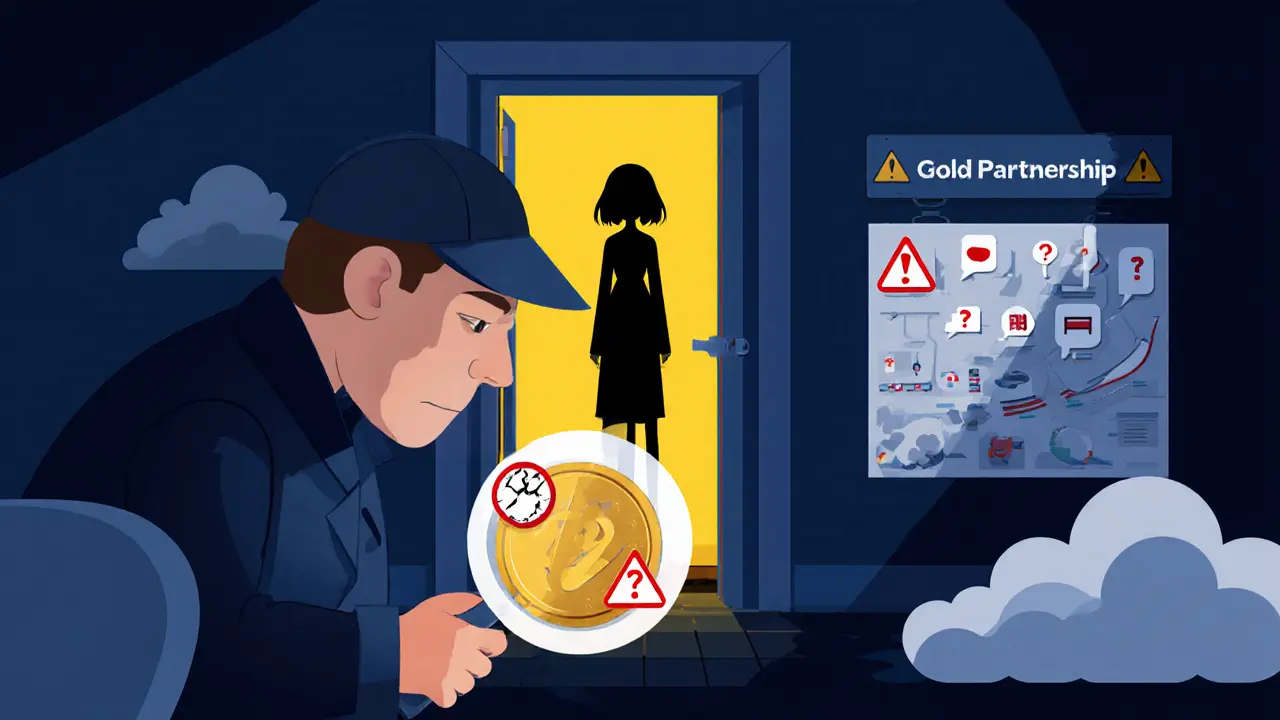NFT Cost Comparison Calculator
Minting Cost Calculator
Compare the estimated costs to mint NFTs on Palette Chain versus Ethereum based on current data.
Cost Analysis
Based on claims from Palette project documentation: Palette Chain costs ~0.001 ETH equivalent per NFT mint versus Ethereum's typical ~0.02-0.05 ETH.
Note: Actual costs may vary based on network congestion and token prices.
Quick Takeaways
- Palette (PLT) is a blockchain platform built for issuing, managing and trading digital items, mainly NFTs for entertainment.
- The token has a fixed supply of 1billion PLT and serves six utility roles, from paying NFT fees to staking for network governance.
- Palette runs its own chain but claims compatibility with Ethereum through an ERC‑404 bridge.
- It only trades on a handful of small exchanges (e.g., Bilaxy) and price data is highly inconsistent across tracking sites.
- Adoption is limited; there are few real‑world use cases, minimal community chatter, and the roadmap is vague.
What Exactly Is Palette (PLT)?
Palette (PLT) is a Palette PLT cryptocurrency that powers a purpose‑built blockchain for digital items and entertainment‑focused NFTs. The project was launched by a company called HashPalette. Their public white paper describes Palette Chain as a “specialized blockchain designed for issuance, management, and distribution of digital items in the entertainment field.” In plain English, the goal is to give creators a cheaper, faster place to mint and trade NFTs for things like manga, music, or sports memorabilia.
Tokenomics: Supply, Distribution, and Utility
The PLT token has a hard cap of 1billion coins. No inflation mechanism has been announced, so the total supply stays fixed once all tokens are minted.
According to the white paper, PLT fulfills six core functions:
- Paying fees for minting new NFTs on Palette Chain.
- Covering node‑operation costs that keep the network running.
- Delegating voting power to members of the Palette Consortium (the governance body).
- Purchasing NFTs directly from creators.
- Granting usage rights to holders of specific NFTs.
- Settling subscription‑style payments for ongoing services.
There is no public data on how many PLT are currently circulating. One Holder.io report from April 2025 listed 0% circulating, while a September 2025 update claimed active trading, suggesting that a portion of the supply has been released but the exact amount remains unclear.
Technical Architecture: How Does Palette Differ From Ethereum?
Palette Chain is advertised as an “Ethereum‑compatible” network using a custom token standard called ERC‑404. This means developers can write smart contracts that behave similarly to ERC‑20 or ERC‑721 tokens but are executed on Palette’s own consensus layer.
The white paper says the main advantage over Ethereum is lower gas fees for NFT operations and more predictable transaction costs. Unfortunately, the documentation does not publish concrete benchmarks (TPS, latency, or fee numbers), so the claim is largely theoretical.
| Feature | Palette (ERC‑404) | Ethereum (ERC‑721) |
|---|---|---|
| Native NFT standard | ERC‑404 (custom) | ERC‑721 |
| Maximum token supply | 1billion PLT | Unlimited (subject to issuance) |
| Reported gas fee (mint) | ~0.001ETH‑equiv (claimed) | ~0.02‑0.05ETH (typical 2024) |
| Consensus mechanism | Proof‑of‑Stake (delegated) | Proof‑of‑Stake (post‑Merge) |
| Cross‑chain bridges | Ethereum bridge (ERC‑404) | Multiple bridges (e.g., Polygon, Arbitrum) |
These numbers are taken from the project's own statements and publicly‑available market data; independent verification is lacking.
Market Presence: Where Is PLT Traded?
Tracking sites disagree on Palette’s market status. Holder.io’s April 2025 snapshot listed the coin as “not active,” while the September 2025 update showed it trading on Bilaxy with a reported price around $62. CoinGecko, however, displayed a 24‑hour price band of $51‑$61 and an all‑time high of $594.51 (dated March2024). Such contradictions suggest low liquidity and possible data‑feed errors.
At the time of writing, the coin appears on only two minor exchanges, with daily volume under $100K. That level of activity makes price slippage a real risk for anyone trying to buy or sell sizeable amounts.
How to Acquire Palette (PLT)
If you decide to try Palette, the practical steps are:
- Create an account on a supported exchange (e.g., Bilaxy). Verify your email and, if required, complete KYC.
- Deposit a major cryptocurrency such as USDT, BTC, or ETH.
- Search the trading pair PLT/USDT (or PLT/BTC) and place a market or limit order.
- Withdraw the PLT tokens to a wallet that supports ERC‑404. Many standard ERC‑20 wallets (MetaMask, Trust Wallet) can hold PLT if you add the custom contract address from the official website.
Because the token isn’t listed on big platforms like Binance or Coinbase, you’ll need to be comfortable with smaller‑exchange risk (security, withdrawal limits, possible delistings).
Risks, Criticisms, and Red Flags
Several warning signs stand out:
- Data inconsistency: Prices, circulating supply, and exchange listings differ wildly across reputable sites.
- Sparse community: No documented Reddit threads, Discord servers, or real‑world case studies have been found.
- Unclear roadmap: The white paper mentions “foundations for NFT and cryptocurrency” but gives no milestones, development timelines, or partnership announcements.
- Limited utility proof: While PLT is supposed to pay NFT issuance fees, there are no public marketplaces or creator programs that actually use it.
- Regulatory gray area: The project targets Japan’s entertainment sector, yet no licensing or compliance statements are available.
Investors should treat PLT as a high‑risk speculative asset, similar to many micro‑cap tokens that have limited exposure.

Future Outlook: What Might Change?
If Palette manages to launch a functional NFT marketplace and secure a few strategic partnerships in Japan’s manga or music industry, the token could see a modest uptick in demand. Conversely, without clear developer tooling, community growth, or exchange listings, the coin may remain a niche curiosity.
Key factors to watch:
- Official roadmap updates or a new white‑paper version.
- Listing on larger exchanges (e.g., KuCoin, Gate.io).
- Partnership announcements with established entertainment brands.
- Launch of SDKs or API docs that enable third‑party developers.
Until one of those milestones materializes, the safest approach is to keep PLT exposure minimal.
Quick Checklist Before You Dive In
- Verify the contract address on the official hashpalette.com site.
- Confirm the exchange you’re using is reputable and has withdrawal insurance.
- Allocate only a small portion of your crypto portfolio (e.g., <5%).
- Stay updated on any new white‑paper releases or community announcements.
Frequently Asked Questions
What is the primary purpose of Palette (PLT)?
Palette aims to provide a blockchain that makes issuing, managing, and trading digital items-mainly NFTs for entertainment-cheaper and faster than using Ethereum directly.
How many PLT tokens exist?
The maximum supply is fixed at 1billion PLT. Exact circulating numbers are unclear because different trackers report different figures.
Where can I buy Palette?
Currently the token trades on a few small exchanges such as Bilaxy. You need to create an account, deposit a major crypto, and then trade the PLT pair.
Is Palette compatible with Ethereum?
Palette uses a custom ERC‑404 standard that bridges to Ethereum, allowing assets to move between the two chains, but the bridge is not widely used yet.
What are the biggest risks of investing in PLT?
Key risks include price data inconsistencies, low liquidity, tiny community, lack of real use‑cases, and no clear regulatory compliance.

Shikhar Shukla
June 22, 2025 AT 04:06Upon careful examination, the white‑paper’s claims appear overly optimistic and insufficiently substantiated; the absence of independent benchmarks renders the purported fee advantages speculative at best.
Deepak Kumar
June 22, 2025 AT 05:13Nice breakdown! If you’re looking to dip your toes in PLT, start with a modest amount, keep an eye on the exchange liquidity, and consider staking only after you’ve tested the withdrawal process.
Matthew Theuma
June 22, 2025 AT 06:20Interesting read, and I appreciate the thoroughness 😊 The data inconsistencies you highlighted are a red flag, especially for newcomers who rely on price feeds.
Carolyn Pritchett
June 22, 2025 AT 07:26This coin is a textbook example of hype over substance; the lack of real‑world partners and the vague roadmap make it a risky gamble for anyone seeking genuine utility.
Cecilia Cecilia
June 22, 2025 AT 08:33Sounds risky.
lida norman
June 22, 2025 AT 09:40Wow! The whole setup feels like a rollercoaster of promises 🎢 - cheers for the effort, but the suspense is downright nerve‑wracking.
Miguel Terán
June 22, 2025 AT 10:46Palette’s ambition to carve a niche in entertainment NFTs is clear yet daunting the platform touts lower fees but provides no empirical data to back the claim many developers shy away from untested standards the ERC‑404 token feels like a reinvention of the wheel without clear advantage the governance model is described vaguely leaving token holders guessing about real influence the supply cap of one billion sounds finite but circulating numbers remain hidden the bridge to Ethereum is advertised as seamless yet users report occasional hiccups the market presence on tiny exchanges raises concerns about liquidity and price manipulation the community silence is palpable with no active Discord or Reddit threads the roadmap lists broad goals but no concrete milestones the staking rewards are hinted at but not quantified the technical documentation lacks performance metrics and the consensus algorithm is described in broad strokes the overall ecosystem feels fragmented and the project risks being another footnote in the crowded micro‑cap arena despite these issues some niche creators might find utility if the team delivers on integration promises the future therefore hangs on execution rather than hype
Shivani Chauhan
June 22, 2025 AT 11:53I'm curious how Palette plans to attract Japanese manga publishers; a partnership with a well‑known studio could dramatically shift the token’s relevance.
Deborah de Beurs
June 22, 2025 AT 13:00Honestly you missed the point entirely-if the fee structure truly undercuts Ethereum, developers will flock regardless of the missing benchmarks, so dismissing it outright feels premature.
Bobby Lind
June 22, 2025 AT 14:06Great advice, Deepak, especially the part about testing withdrawals; remember, small‑cap tokens can vanish overnight, so keep your exposure low, stay diversified, and monitor exchange listings closely.
Jessica Cadis
June 22, 2025 AT 15:13From a cultural standpoint, the Japanese entertainment market values long‑term relationships, so if Palette can secure a single flagship anime partnership, the token could see organic growth beyond speculative trading.
Katharine Sipio
June 22, 2025 AT 16:20While the concerns are valid, let us also acknowledge the team’s transparency in publishing their white‑paper; such openness, albeit limited, is a positive indicator of professionalism.
Jason Zila
June 22, 2025 AT 17:26Your point about fee differentials is spot on, the market depth currently is insufficient to support large trades without slippage, thus any potential arbitrage would be quickly erased.
Sara Stewart
June 22, 2025 AT 18:33From a dev perspective, integrating ERC‑404 into existing tooling will require custom SDKs, and the lack of open‑source libraries means early adopters will face a steep learning curve.
Laura Hoch
June 22, 2025 AT 19:40The whole premise reeks of vaporware; without a live marketplace or measurable transaction throughput, the so‑called “lower gas fees” remain nothing more than marketing fluff.
Devi Jaga
June 22, 2025 AT 20:46Oh great, another brilliant idea that will probably disappear before anyone can write a blog post about it-thanks for the masterclass in empty hype.